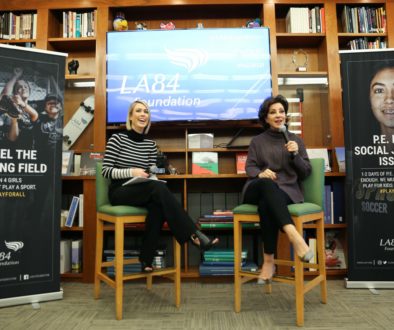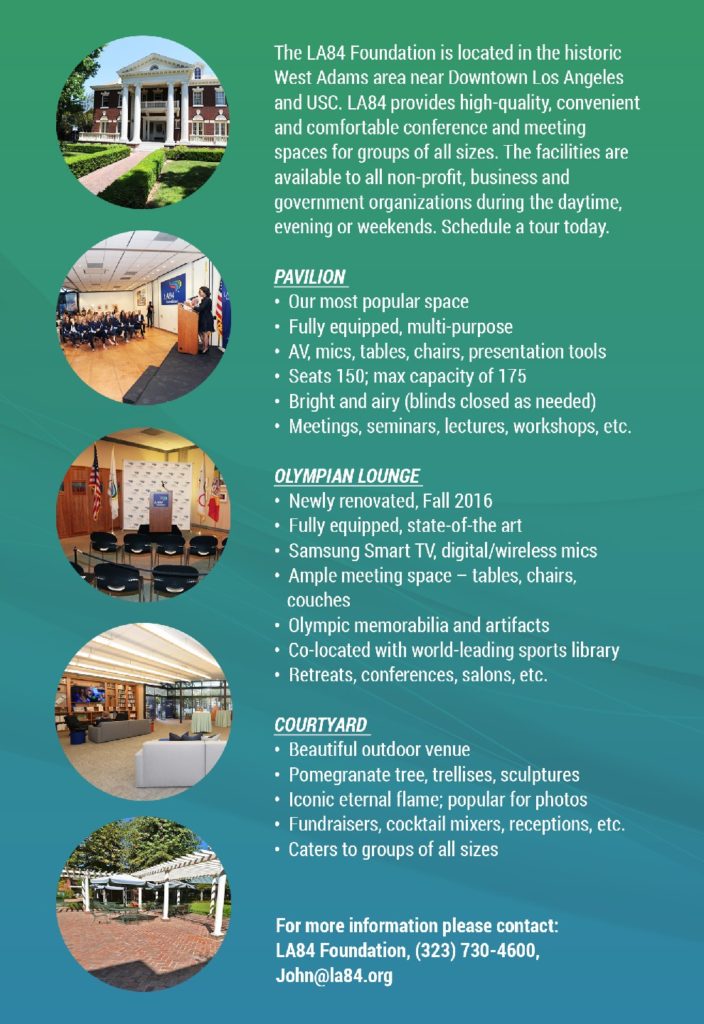SL Interview: Not Your Dad’s “Hoosiers.” Andrew Cohn and Davy Rothbart Look at Indiana HS Hoops
 In November of 2009, New York Times reporter John Branch traveled to the tiny hamlet of Medora, Indiana (population: about 500 people), located about 80 miles south of Indianapolis. Medora is home to the nation’s largest covered bridge, but amidst the shuttered plastic factories and brick plants Branch could find few signs of the Rockwellian idyll of small-town rural life.
In November of 2009, New York Times reporter John Branch traveled to the tiny hamlet of Medora, Indiana (population: about 500 people), located about 80 miles south of Indianapolis. Medora is home to the nation’s largest covered bridge, but amidst the shuttered plastic factories and brick plants Branch could find few signs of the Rockwellian idyll of small-town rural life.
“There is little to cheer but for the high school basketball team,” Branch wrote, only to signal yet another death knell: The basketball team “does not win.” The previous season, the Hornets finished 0-22.
Branch, who last year won a Pulitzer Prize for feature writing for “Snow Fall,” his multi-media account of skiers killed in an avalanche, depicted a bleak and depleted town, with a high poverty rate and rampant drug use. Medora, he suggested, “could be this generation’s anti-Hoosiers,” a reference to the 1986 film about the real-life Milan High basketball team that won the state championship in the mid-1950s.
Branch’s article served as inspiration, and foil, for filmmakers Andrew Cohn and Davy Rothbart. After reading Branch’s story, they decided that Medora and its high school basketball team deserved a deeper examination. They moved to neighboring Seymour, embedded themselves with the team for six months during the 2010-11 season, and filmed the interaction between the players, their parents, and their coach.
After initial filming Cohn and Rothbart raised over $60,000 on Kickstarter to pay the costs of editing the film. Cohn spent the next year shaping 600 hours of footage into an intimate, moving documentary, with the misadventures of the basketball team serving as a metaphor for the crumbling, yet resilient small town. (The film’s executive producers include actors Stanley Tucci and Steve Buscemi.)
“Medora” premiered at the SXSW Film Festival and it has been making the rounds of the festival circuit ever since. “Medora” will air on PBS in the spring of 2014 as part of the Independent Lens documentary series.
Cohn and Rothbart are longtime collaborators; they are Midwesterners by birth — they both grew up in Michigan — and basketball junkies for life. Rothbart is the editor and publisher of Found Magazine and the author of “My Heart Is an Idiot” and “The Lone Surfer of Montana, Kansas.” His stories have aired on “This American Life.” Cohn is a screenwriter and documentary filmmaker who is a senior editor of Found Magazine. He is creative director for 21 Balloon Productions.
SportsLetter interviewed Cohn and Rothbart while they were in Indiana to screen the film there. (Rothbart was only available to answer the first question.)
–David Davis
SportsLetter: You’re in Indiana right now, showing the film in Bloomington and Indianapolis. What has been the reaction to the film there?
Davy Rothbart: It’s been great. For the Bloomington premiere, at Indiana University, a ton of the Medora players and families came. Angelo Pizzo, who wrote the screenplay for “Hoosiers,” was there to present the film. “Hoosiers” is such a legendary film, so to see how he responded to the film was awesome.
People from small towns like Medora – they’re all over the state. Either they live in a small town, or they’re from a small town, or their parents are from a small town. It’s not just Indiana, of course. There are Medoras all over the country, but it really seems to hit home here. It’s a real-life, modern-day “Hoosiers.”
SL: Why do you think high school basketball is so important in Indiana?
Andrew Cohn: We did lots of research on that question: How did Indiana become such a high school basketball mecca? A lot of it is that these small towns and schools don’t have enough players for a football team or even a baseball team. So those sports are out of the question.
A lot of it is tradition. From what I’ve heard, for a lot of the kids that worked on farms, winter was the only season when they could play a sport. Obviously, that’s basketball season. During the fall, during football season, they had to help out on the farm. During the spring, during baseball season, they were helping on the farm.
Each of the towns and the neighboring towns in these communities had their own basketball teams. In the counties there were rivalries. You don’t see that so much anymore with the consolidation of the small schools.
SL: You and Davy have talked about “Medora” being a very personal story. How so?
AC: I have some Hoosier roots. Both my parents went to IU. They both grew up in Indiana. My mom is from a little town in Indiana called Earl Park that is smaller than Medora, if you can believe it. My uncle still owns the only bar in town. So, I spent a lot of time in the Hoosier state, hanging out in my mom’s hometown in the summers and the holidays.
Davy and I are absolute basketball fanatics. We met on a basketball court. I’ve played basketball my whole life. It’s my favorite sport. The idea of doing a basketball documentary in the state of Indiana — about a high school basketball team that never wins — really spoke to us.
It’s not like we were searching for some documentary project. We weren’t going, “Oh, man, we want to make a film. Let’s scour the newspaper and find a story.” It just popped out at us.
SL: You mentioned that your introduction to Medora was John Branch’s article. That piece paints a very bleak portrait of the town and the team, so what was it that attracted you to the project?
AC: When we read the story, we were intrigued. We were interested. But it wasn’t until we went down to the town that we knew that this was something that we wanted to dedicate ourselves to. Once we saw the town and met some of the people, it kind of clicked. There’s something eerie and quiet and beautiful about it. We felt like we wanted to give a more full-blown picture of what was going on in towns like Medora because while the article is amazing and, obviously, John Branch is a great writer, you can only go so deep in an article of that length. What we wanted to do was go a little bit deeper and meet some of these kids and get to know them and illustrate what they’re faced with in towns like Medora.
SL: Many people from Medora were not happy with Branch’s story. Now that you’re spent a lot of time there, did you find that his portrayal was an accurate one?
AC: It was accurate. I don’t think there was anything in the story that was not true. I think it’s hard for people to hear some of that stuff, even if it is true. You know, the truth hurts sometimes. But I also think there’s some positive aspects of the town that we wanted to explore. There are still values in small towns.
It’s interesting because when John heard that Davy and I were doing a documentary and that we were going to move down there, he said the light bulb went on. He was like, that’s the way to do that kind of story: you have to embed yourself in the community, stay longer, go deeper.
SL: How was it that the town of Medora agreed for you to shoot a documentary?
AC: There was quite a bit of attention after John’s article came out. Several other people were interested in doing a documentary. At the time, the school board said no to everybody, including us. They felt like, they had just been burned by the article. They were still licking their wounds. They didn’t feel like it was in their best interest.
Over the next year, Davy and I kept pushing and badgering. We were persistent. Like I said, my mom lives in Indiana. Davy and I both grew up in Ann Arbor, but after I finished college she moved back to be closer to family. So when I’d come home for Thanksgiving or for the holidays, I’d go down to Medora to watch a game and catch up, let them know that I’m still around and still wanted to do it.
They gave us permission right before the [2010-11] season started, so Davy and I had to make a decision if were we going to do this or not. We decided, you know what, let’s just go for it. We sublet our apartments, moved down there, stayed at a motel nearby, and ended up being there for like eight months, filming these kids’ lives, following the basketball team, and following the story of the town.
SL: What attracted you to a high school basketball team that is a perennially losing team?
AC: We just thought it would be different. We wanted to do a little different take on a sports documentary. A lot of times, sports documentaries are about the drive to the championship or the kid chasing the college scholarship or the coach who is the father figure. Some of my favorite sports documentaries ever explore that kind of stuff: “Hoop Dreams,” “Murderball,” “Undefeated.” All those documentaries are amazing. We just felt like we wanted to tell a different story.
It’s funny: people are coming up to us and saying that “Medora” reflects their high school athletic experience much more than most sports documentaries because, for 99 percent of us, there is no championship. There is no college scholarship waiting. It’s more like what happens in the movie: it’s getting busted for drinking, it’s homecoming, it’s acne. That’s closer to most people’s experience in high school and high school sports.
But the point of the movie is that you don’t have to win a state championship to celebrate. You see in the movie, when Medora finally wins a game, just how much it means to them. These small victories should be celebrated. Just because they didn’t win a championship doesn’t mean that we can’t celebrate them and their achievement.
I think that, sometimes, people forget what amateur sports are really about. Yes, it’s about building character, but it’s also about having fun and it’s about being with your friends. Those are some of the themes and subjects we wanted to touch on in the film.
SL: Several scenes show the team’s coach, Justin Gilbert, harshly getting on the players. How effective was his coaching style with the boys?
AC: I think that being the coach of the Medora Hornets is probably the toughest coaching position in the state of Indiana at the high school level. You’re playing schools that are twenty times your size, you don’t have much talent, and the kids haven’t been playing together long.
I think coach Gilbert learned what was really important, what his job was really about. Yeah, there was no championship. This team was not going to win a sectional. They were not going to even be .500. But there are other things that they can do to build character and to learn and to grow.
SL: How did the losing streak affect the boys on the team?
AC: I think, in the beginning of the season, they were kind of used to it. Every locker room scene was the same thing: we lost again or we let one slip away or we got blown out. A lot of times it was embarrassing. It’s embarrassing to go out and lose by 60 points and you got the opposing team crowd’s yelling at you. These are high school kids, you know? It was really hard to watch.
Coach Gilbert — that was his first year at Medora — he was not used to it. He was not going to allow the players to get used to it and started instilling that in them.
SL: What was it like for you, as observers-directors, to watch the team lose game after game?
AC: Davy and I wanted them to win so bad. We got really into the games because we knew how much it meant for the kids. We knew they were going through some really hard stuff. To tack on another 40-point, 50-point loss, you could almost see it wearing the kids down. The losing streak was like the monkey on their backs.
We were really emotionally invested because, off the court, we were getting to know the kids. We knew they were dealing with some difficult things. We wanted to communicate that in the film. We knew that if audiences got to know these kids, they would want to root for them just as hard as we did.
SL: One bright note in the film is when the team finally wins a game and they get paraded through the town on the fire trucks. Did the victory change the boys in any way?
AC: It wasn’t like, they won a game and the town is going to be okay or anything like that. But there was a huge sense of relief. You could see it in the kids’ faces in the locker room, smiling and happy. That was a great, great feeling. Like, thank God we won and this losing streak is over. There was also, in the weeks afterwards, a sense of pride. The bonus was, they actually won their next game, too.
SL: The film showed some risky behavior among the kids, including underage drinking. Was it a difficult decision about whether to include that material?
AC: There’s a lot more embarrassing stuff that we didn’t use in the film, but look: high school kids drink. These kids are going to be drinking whether we’re there or not. What we showed seemed pretty innocent — just some drinking after a high school dance. Nobody was drinking and driving. If something had gotten out of control, we would’ve stepped in.
The real reason that the party scene is in there is because it’s part of Rusty’s story. [Editor’s note: Rusty Rogers is the starting center on the team; his mother is shown in the film to have an alcohol problem.] It’s not in there to be sensational. It’s to show Rusty’s growth in the story because it was important to see Rusty say, “No I’m not going to drink.”
Davy’s and my attitude was, we’re going to film everything. We’ll make sure we put it together in a sensitive way. To the kids’ credit, they trusted us with that footage, to treat it in a sensitive manner and not make them look like idiots.
SL: What documentary films — either about high school sports or not — have influenced you?
AC: Davy and I are documentary junkies. We love documentaries like “Hands on a Hard Body,” which is a great film by Rob Bindler, “Murderball,” “Hoop Dreams,” “American Movie,” “Dark Days.” Those documentaries are always in the back of our minds. I think they’re reflected in the tone of the movie more than anything. The themes have to be original and have to be what fits your particular movie.
Davy and I didn’t go to film school. We come from creative writing backgrounds. I come from a screenwriting background; Davy has published two books and makes a living as a writer. We have those storytelling instincts. And, actually, “Medora” has a pretty classic structure, as far as three acts, and there are basic archetypes and storytelling techniques that we use. We’re going to follow a season and select a few kids to follow, like “Undefeated,” for instance.
SL: What most surprised you in making “Medora”?
AC: I was surprised by the willingness of the kids to open up to us. I don’t know if I would have had the courage to open up my life to a stranger the way that some of these kids did. I was also surprised at how quickly the cameras became invisible and how quickly the kids became used to the cameras. For about a week you could see the kids taking a glance at the camera here and there, but after that they really didn’t look at the camera.
The other thing is, it’s really weird to see a film like “Medora,” which we started with modest expectations, be able to reach so many people. We’re extremely grateful for that.
SL: What was the most difficult challenge in making the film?
AC: The editing process was challenging. There was 600 hours of footage. Cutting that to an 82-minute movie was quite an undertaking. My editing partner, Vanessa Roworth, and I sat in an apartment for a year putting this story together. That’s when you are fine-tuning and figuring the story out. Mary Manhardt, who’s worked on all of Marshall Curry’s documentaries, including “Street Fight,” “Racing Dreams” and “If a Tree Falls,” came in for the last three months and helped us tighten up the film toward the end.
Obviously, Davy and I knew what our story lines were and who our subjects were going to be while we were filming. But in the editing room is where you start to weave it all together and make it coherent and not feel like a bunch of separate pieces.
SL: It seems like this is a great time to be a documentary filmmaker, in and outside of sports. Why do you think this is happening now?
AC: I’ve been doing the film festival circuit for a year now, and at every film festival it’s the documentaries that stand out. It’s just a great way of telling stories. This really is a golden age for docs. I hope people enjoy all the great films that are out there and search them out — like “12 O’Clock Boys,” about a dirt bike crew from Baltimore, directed by my friend Lofty Nathan.
I think part of it is, the technology is so cheap now. People can go out and buy affordable cameras. It’s not like you have to put together a big budget. You can just get a camera and start shooting. If you know how to tell a story, you can do something great.
SL: What are your upcoming projects?
AC: I’m working on a short film for ESPN for their “30 for 30” series. I’m also going to try and get back into doing some screenwriting. I’ve got a couple of screenplays that I’ve been working on for the last couple of years that I’m excited to pursue.
Davy has a bunch of different things he’s working on. He has a documentary that he’s been working on for a while, and he’s writing a screenplay based on one of his stories in one of his books that’s going to be made into a movie.




